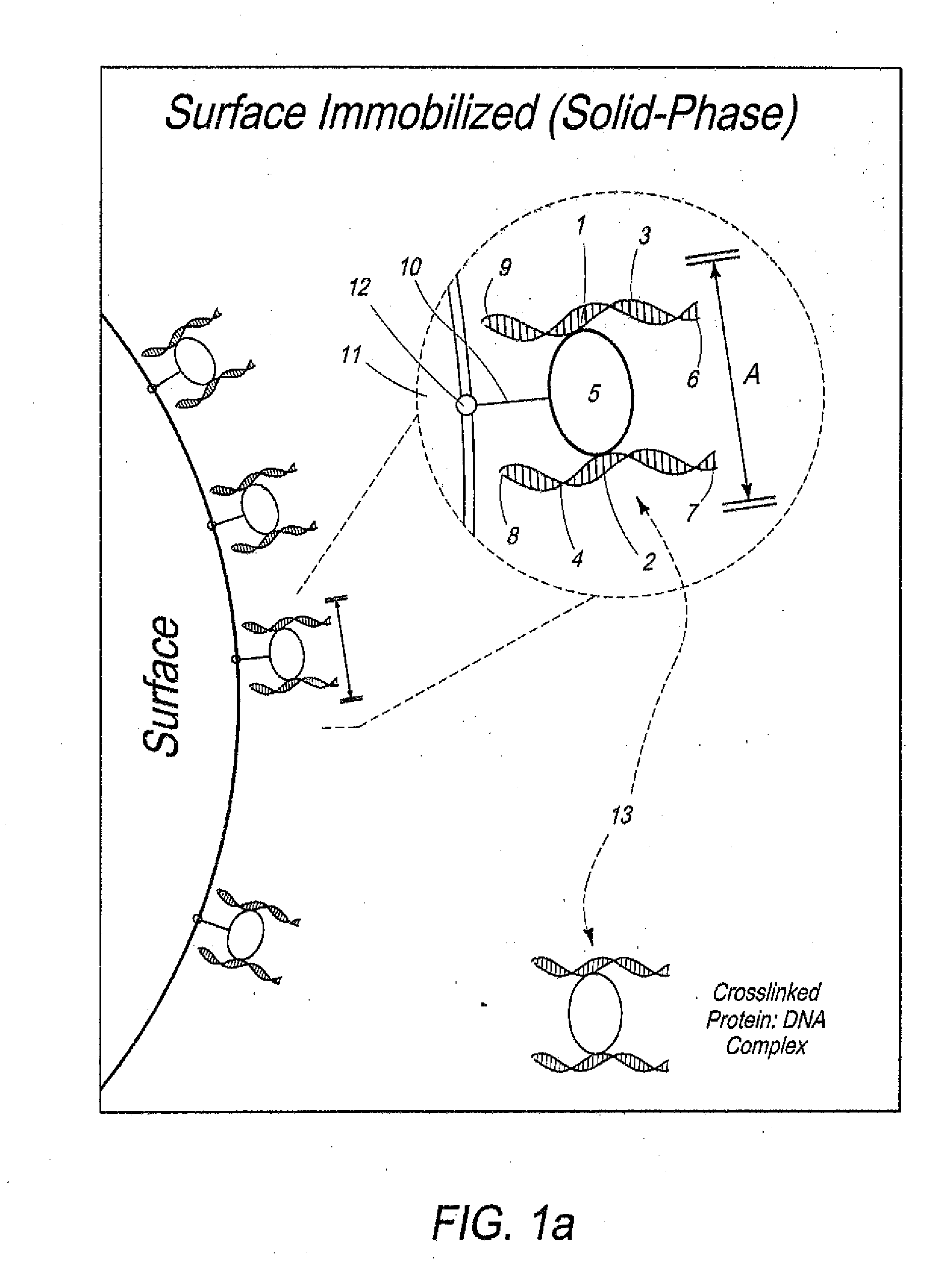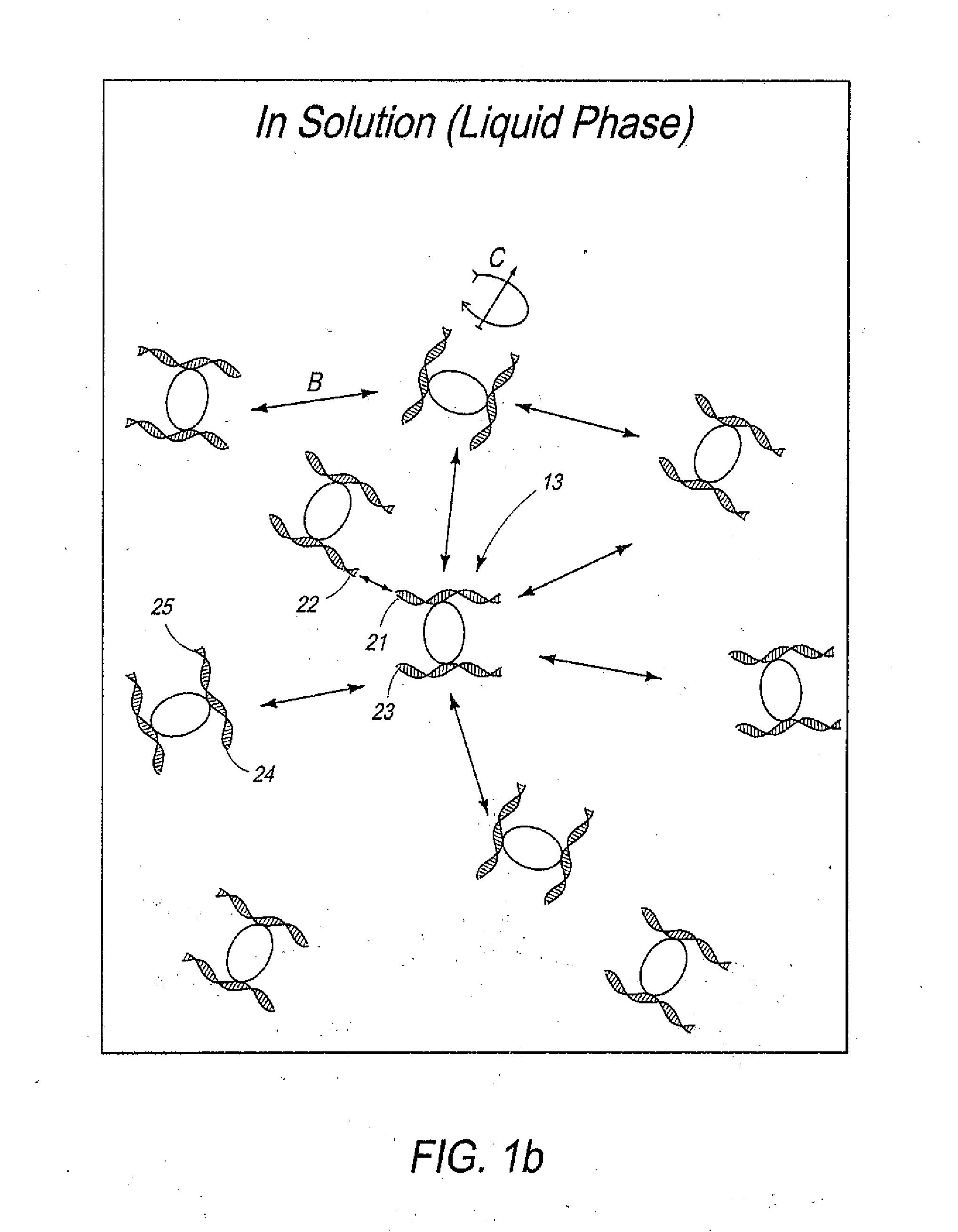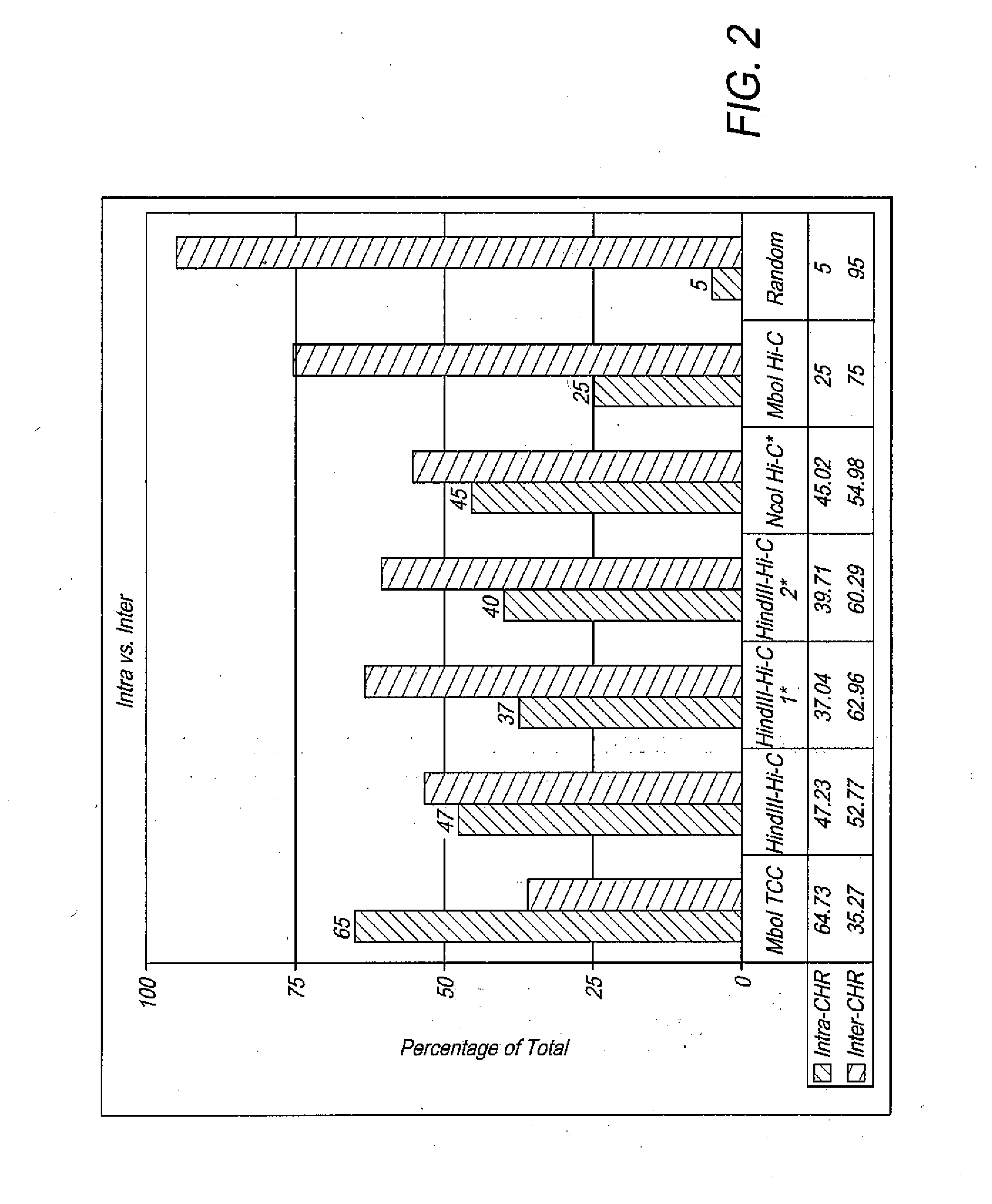Tethered Conformation Capture
a technology of conformation capture and tethered conformation, which is applied in the field of tethered conformation capture, can solve the problems of low resolution and throughput of most methods used to address 3d organization of the genome, and the inability to analyze 3d organization of chromatin remains elusive, and achieves the effect of less noise and higher resolution
- Summary
- Abstract
- Description
- Claims
- Application Information
AI Technical Summary
Benefits of technology
Problems solved by technology
Method used
Image
Examples
example 1
[0060]Overview. In one example of the present invention, cells were crosslinked with formaldehyde and treated with Iodoacetyl-PEG2-Biotin to biotinylate the cysteine residues of all proteins. Chromatin was then digested with a restriction enzyme, leaving 5′ overhangs. After digestion, crosslinked protein-DNA complexes were immobilized on the surface of streptavidin-coated magnetic beads through biotinylated proteins and excess streptavidin was blocked. The 5′ overhangs were filled in with an α-thio-triphosphate containing nucleotide analogue inserted before a biotinylated nucleotide. Blunt DNA ends were then ligated while immobilization prevented free diffusion of the complexes, therefore promoting intramolecular ligations. After ligation, DNA is purified, which separates it from the surface and crosslinked proteins. The biotinylated nucleotides on DNA ends that did not participated in ligation were then removed using E. coli Exonuclease III (ExoIII). ExoIII was used to catalyze rem...
example 2
[0088]We created a TCC library from 25 million GM12878 human lymphoblast cells (Coriell Institute, Camden, N.J.) using HindIII as the restriction enzyme. For comparison, a Hi-C library of 25 million GM12878 cells digested with HindIII was also created as described by Lieberman et al. The two libraries were sequenced on Illumina Genome Analyzer II platform (Illumina, San Diego, Calif.) in a paired-end format. For every dataset, the two reads of each cluster were filtered for ligation junctions and then aligned to build GRCh37 / hg19 of the human genome using Bowtie (Langmead et al., 2009).
[0089]Two types of read pairs do not contain information about the 3D organization of the genome and are a result of error in the process. The first group is the DNA molecules that do not include a ligation junction yet bind to streptavidin coated beads and appear in the final library. In sequencing, these molecules which we refer to as “dirt” result in read pairs that align only 300-700 bp apart to o...
example 3 (
TCC has Reduced Level of Noise)
[0092]Differing intermolecular ligation levels should manifest itself in the portion of interchromosomal interactions in the data. In a random ligation of HindIII-digested human DNA, 95% of all ligation events are expected to take place between fragments that belong to different chromosomes. In other words, in a Hi-C or a TCC experiment, 95% of the noise caused by intermolecular ligations comes in the form of interchromosomal connections. These random ligations are expected to be uniformly distributed throughout the interaction matrix.
[0093]Due to existence of chromosome territories (Cremer and Cremer, 2001) and polymer-like properties of DNA (Lieberman-Aiden et al., 2009), a higher portion of contacts than expected by random that in fact are present in the cells are expected to be intrachromosomal. This is why intermolecular ligation noise appears mostly as interchromosomal interactions in the data. The portion of intrachromosomal and interchromosomal...
PUM
| Property | Measurement | Unit |
|---|---|---|
| temperature | aaaaa | aaaaa |
| surface area | aaaaa | aaaaa |
| volume | aaaaa | aaaaa |
Abstract
Description
Claims
Application Information
 Login to View More
Login to View More - R&D
- Intellectual Property
- Life Sciences
- Materials
- Tech Scout
- Unparalleled Data Quality
- Higher Quality Content
- 60% Fewer Hallucinations
Browse by: Latest US Patents, China's latest patents, Technical Efficacy Thesaurus, Application Domain, Technology Topic, Popular Technical Reports.
© 2025 PatSnap. All rights reserved.Legal|Privacy policy|Modern Slavery Act Transparency Statement|Sitemap|About US| Contact US: help@patsnap.com



